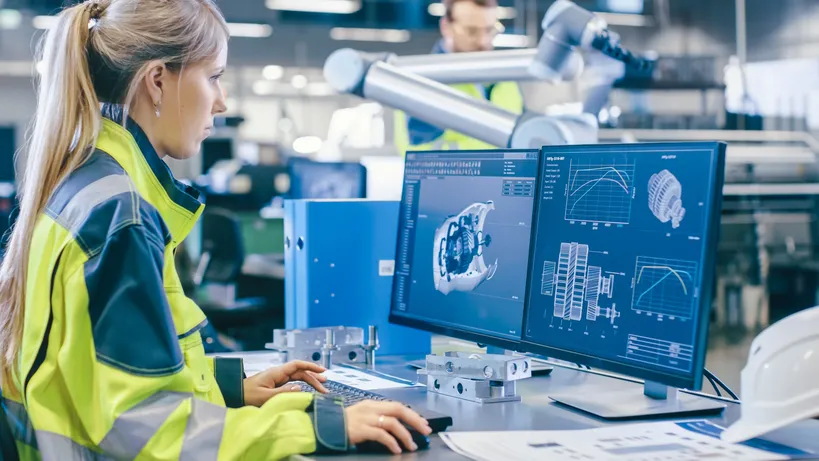How to Improve Manufacturing Efficiency With Cutting-Edge Production Techniques

In today’s competitive global market, manufacturing efficiency is the key factor. Firms that can make their goods quickly, cheaply, and with high quality keep an edge in the race. Now, what does it take to attain this? Strategic planning, technological innovation, and operational excellence.
Sophisticated production techniques developed over the years have shown to be quite instrumental in improving production efficiency. These involve lean manufacturing and Industry 4.0 technologies that help manufacturers create more while reducing waste.
This article will talk more about these cutting-edge techniques that contribute to a highly efficient manufacturing process. Read on.
Industry 4.0 Technologies
Industry 4.0, also known as the Fourth Industrial Revolution, is characterized by the convergence of physical and digital technologies. These include the Internet of Things (IoT), artificial intelligence (AI), robotics, cloud computing, and big data analytics. These technologies can be used to create smart factories that are highly connected, automated, and data-driven.
One of the key benefits of Industry 4.0 technologies is the ability to improve efficiency through real-time data analysis and predictive maintenance. By collecting and analyzing data from sensors and machines, manufacturers can identify potential problems before they occur and take proactive steps to prevent downtime.
Another example of how Industry 4.0 technologies can help boost manufacturing efficiency is in the plastic profile extrusion process, which is a critical step in creating top-grade components. By integrating IoT sensors into extrusion machines, manufacturers can monitor key process parameters such as temperature, pressure, and flow rate in real time. It’s important for these elements to check out as plastic profile extrusion demands some serious level of accuracy and quality assurance.
Lean Manufacturing
Lean manufacturing is a production philosophy that focuses on the elimination of waste and maximization of value. It’s all about just-in-time inventory, which basically means producing goods whenever they’re needed and at a quantity that meets customer demand. This will help in inventory cost reduction, improving cash flows, and minimizing the potential risk of obsolescence.
Another core technique within the lean family, value stream mapping describes eliminating waste within the entire production process. By mapping materials and information flow, manufacturers can pull out activities that don’t deliver value.
In a study involving companies that have successfully implemented lean manufacturing, the reduction in lead time is approximately 7.1%, while in customer complaint rate (CCR), it reached up to 83%. This is because lean manufacturing can decrease the defects and improve the quality; it would mean better customer service and more market share. (1)
Additive Manufacturing (3D Printing)

Additive manufacturing, or 3D printing, is a process that involves creating physical objects from digital designs. This technology has the potential to revolutionize production line efficiency by enabling the creation of complex and customized products that were previously difficult or impossible to manufacture using traditional methods.
For instance, 3D printing and computer-aided designs (CAD) can be used in the construction industry to visualize different designs before the actual output. Information technology (IT) can also be used to manufacture intricate and complicated architectural parts with high accuracy and less production time.
One of the key advantages of additive manufacturing is the ability to reduce lead times and cost by eliminating the need for tooling and assembly. Additionally, 3D printing is an effective way to produce lightweight and high-strength components, which can improve product performance and enable the lowest possible material waste.
Advanced Materials
Composites and nanomaterials are advanced materials with huge potential to improve manufacturing process efficiency and the products. Unlike regular materials, they weigh less but are stronger and more durable. Thus, they may allow for weight reduction and enhance fuel economy, resulting in products lasting longer.
Demand for nano-enhanced consumer and commercial products has made this market explode in leaps and bounds. In fact, it’s believed to surpass USD$90.5 billion in 2022. (2)
An example of such advanced materials is carbon fiber. Lightweight but strong, the areas of space, aeronautics, automobile, and even sports equipment apply it. Carbon fiber will reduce the overall weight of the product; this will, in turn, enhance fuel efficiency and, thus, reduce emissions.
Ergonomics and Workplace Design
Ergonomics is a discipline concerned with how people interact with their work environment.
When integrating this into the workplace, it involves considering factors such as the height of workstations, the position of tools, and the amount of repetitive motion required. This way, manufacturers can improve employee engagement and comfort, reduce injuries, and enhance manufacturing productivity. This approach can help prevent injuries such as carpal tunnel syndrome and reduce employee fatigue. (3)
Conclusion
As these technologies continue to evolve, it’s essential for businesses to stay informed and explore opportunities to leverage them to their advantage. Always remember that by investing in innovation and adopting best practices, manufacturers can position themselves for long-term success.
References:
- “Implementing lean manufacturing for improvement of operational performance in a labeling and packaging plant: A case study in Bangladesh, ” Source: https://www.sciencedirect.com/science/article/pii/S2590123022004881
- “Digital Innovation Enabled Nanomaterial Manufacturing; Machine Learning Strategies and Green Perspectives, ” Source: https://www.mdpi.com/2079-4991/12/15/2646
- “Human factors and ergonomics in manufacturing in the industry 4.0 context – A scoping review, ” Source: https://www.sciencedirect.com/science/article/pii/S0160791X21000476
*The information in this article does not necessarily reflect the views of The Global Hues. We make no representation or warranty of any kind, express or implied, regarding the accuracy, adequacy, validity, reliability, availability or completeness of any information in this article.*



